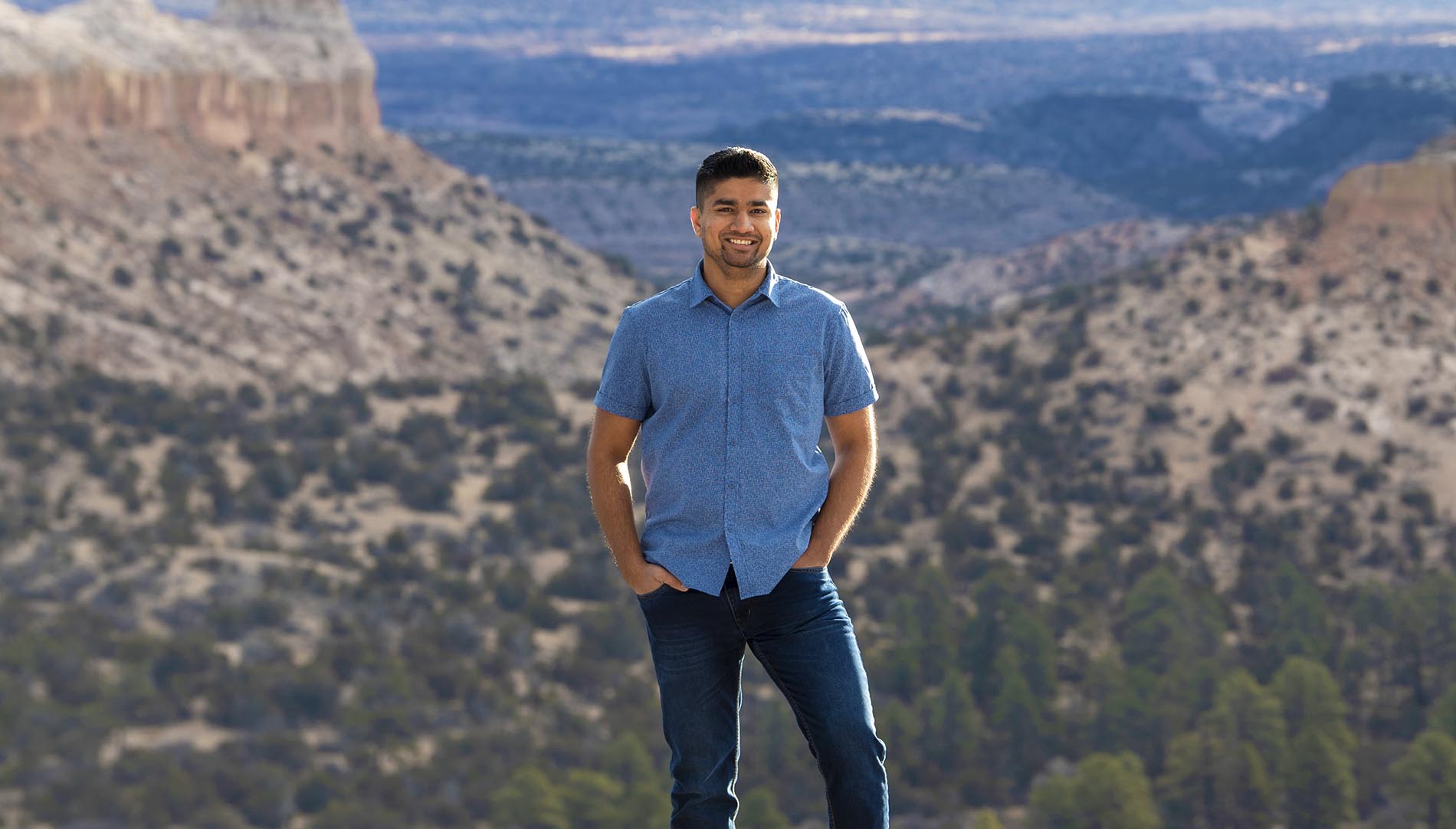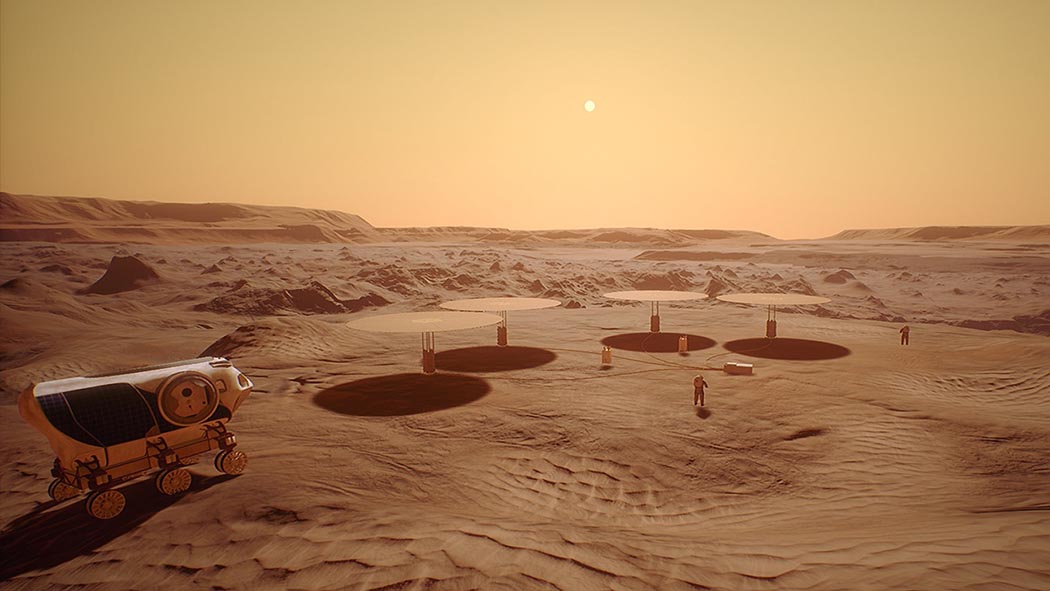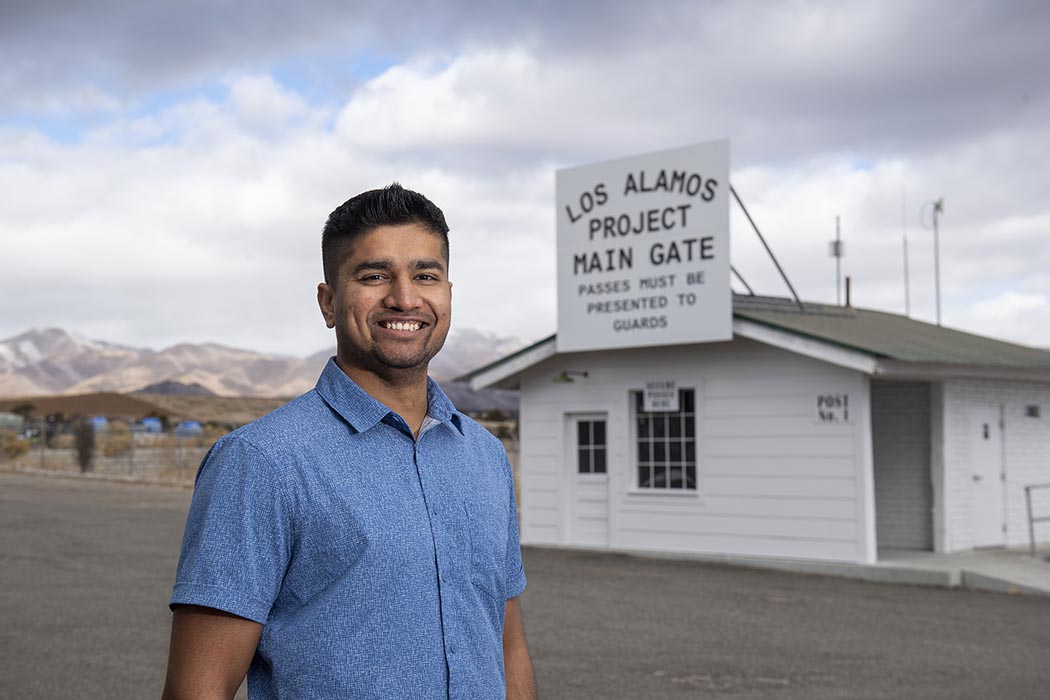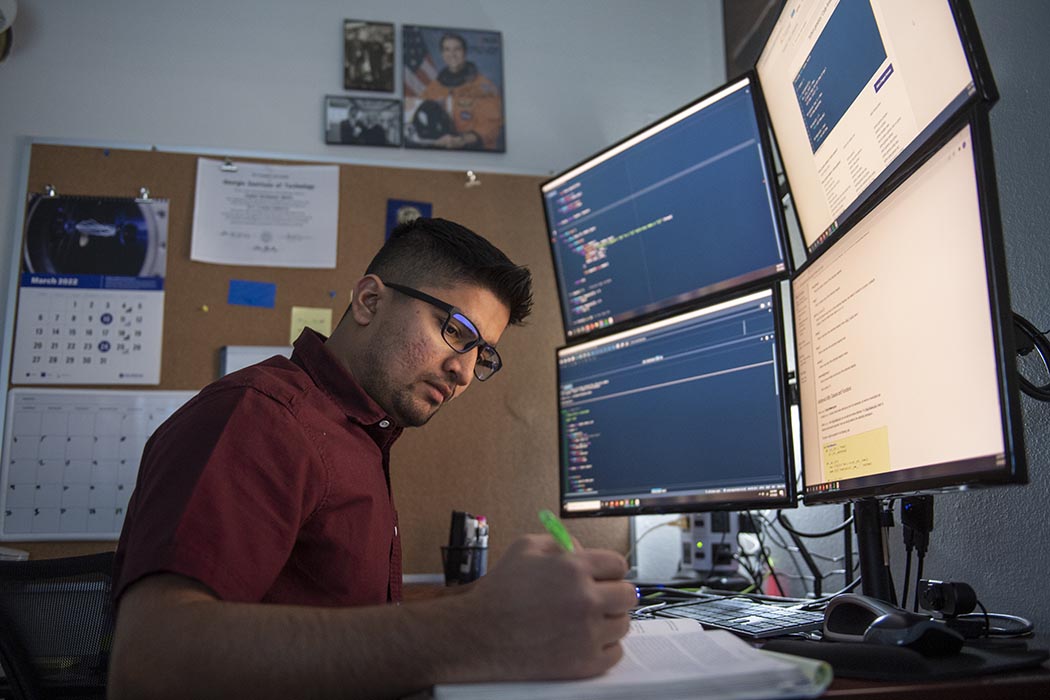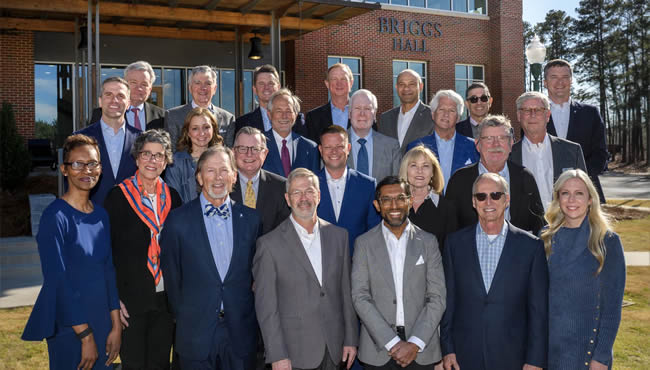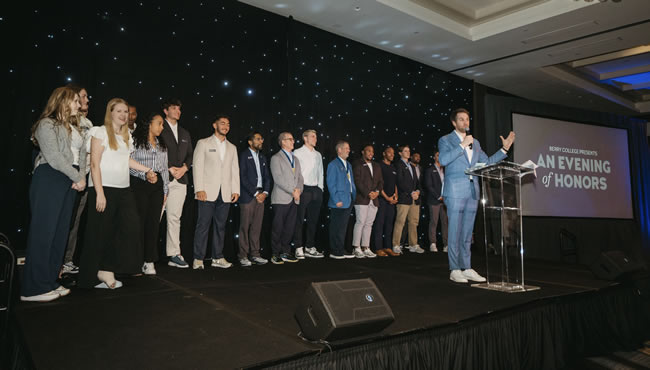STORY BY KARILON L. ROGERS
Just six years after graduating from Berry with a degree in physics, Dr. Vedant Mehta (16C) is designing nuclear reactors for trips to Mars and more at the most renowned research facility in the world, Los Alamos National Laboratory. And that’s not bragging. According to Dr. Dasari V. Rao, director of civilian nuclear programs at LANL, Mehta is “in the middle of some of the most exciting projects we have.”
This work includes nuclear reactor design and development for propulsion from Earth to Mars, as well as for powering future crew habitats and activities on the moon and Mars.
“Sponsors define their power needs, and we start designing applications based on those needs,” Mehta stated, adding that nuclear energy is vital to establishing the desired propulsion level for traveling such enormous distances, as well as to maintaining long-mission habitats for humans.
One hot job
Although he can’t go into detail due to LANL’s status as a premier national security facility – one of the United States’ three National Nuclear Security Administration (NNSA) laboratories – [its complexity would make such detail rough reading, regardless], Mehta can share an overview of the critical work he does. He started simply.
“A nuclear reactor is equivalent to gasoline for cars or a battery in a laptop,” he said. “The power source in reactors is fission. When we split larger atoms, energy is released, which can then be converted to electricity.”
To propel a rocket, the energy from fission also can be used directly as thermal energy, which researchers have found to provide twice the efficiency of the chemical rockets currently in use. [We won’t get into chemical rockets.]
“These are your nuclear thermal rockets,” Mehta explained. “You also could convert the fission energy into electrical energy and magnify the efficiency of rockets considerably more than is possible in thermal rockets, allowing your spacecraft to travel farther. Here, the downside is less thrust or force.
“For propulsion, my job is to design nuclear rockets and help mature them to a level that can eventually fly us to Mars or even Jupiter – to essentially have the reactors generate the power needed and then let thermodynamic engines kick in to do the rest, if needed. It is my job to get us to the next generation of space nuclear reactor technology.”
Current estimates for nuclear thermal propulsion put a jaunt from Earth to Mars at just four to six months, Mehta reported. But getting there is not enough, of course. We must be able to live there, and Mehta is focused on that as well. His work to meet human-habitat power requirements on the moon and Mars launched during the Kilopower project, which began in 2015 as a reactor demonstration strategy.
Current designs have evolved with the goal of developing reactors that would generate electricity for such purposes. These on-planet nuclear reactors are intended to be simpler in design [to nuclear engineers, perhaps] with a block of nuclear materials at the bottom creating fission, the product of which is delivered through heat pipes to a Stirling engine converter that generates electricity. A series of these reactors, each looking like a slender pole topped with a saucer, will generate power for making oxygen, purifying water and meeting other needs of humans living in hostile space environments, as well as powering tasks, such as searching for and drilling for water.
An additional component of Mehta’s work involves the use of “maturing technologies” [things most of us have never heard of] to develop new materials for nuclear energy solutions. One example is utilizing computational quantum mechanics, which he said is “breaking down a material to its atomic level to fully understand it and its responses – thermally and in other ways.”
Although the science is groundbreaking, the philosophy behind it is not.
“Old-day cars were made of simple alloys, such as steel,” Mehta pointed out. “Now, they are made of more efficient, sophisticated and lighter-weight materials that have changed over time. We work on technologies that need to be enabled; new materials are needed to get around all the engineering issues. But because we work with nuclear materials for nuclear applications, actual experimenting is not that simple. Great care must be taken, and there are so many regulations. It is much easier and faster when we can simulate the testing and develop designs on the computer and then use fewer experiments to validate our simulations later.”
While his work sounds a bit out of this world, Mehta is quick to point out that it has applications beyond space: “If I can make tech work in space, we can use it here if it is cost effective.”
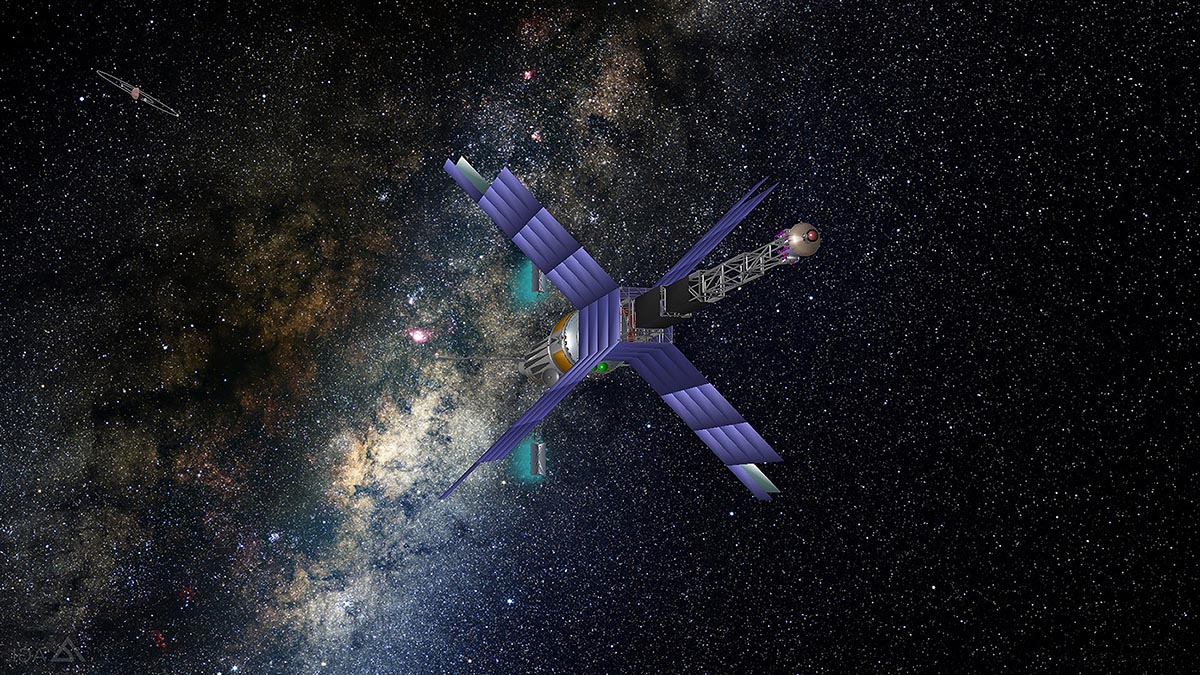
One hot ride
The sixth-grader who set his sights on the space program after first laying eyes on the space shuttle has never detoured from his goal. After graduating from an Atlanta-area high school, he came to Berry planning to participate in the dual-degree engineering program with the Georgia Institute of Technology, which would earn him two bachelor’s degrees in five years. Even then an innovator, he quickly charted a new path at the two institutions that worked out even better for him.
“I could graduate from Berry in three years and then get two master’s degrees in two years,” he explained. “So, in five years I could have one bachelor’s and two master’s degrees rather than two bachelor’s and zero master’s degrees!”
And he did, rocketing through Georgia Tech to earn master’s degrees in nuclear engineering and aerospace engineering in 2018 and then completing his Ph.D. in nuclear engineering from the same institution in 2020. He performed an internship at Sandia National Laboratories in Albuquerque, N.M., also an NNSA facility, and did his Ph.D. research at LANL before being hired straight out of grad school into a staff position at LANL. Few can get hired at the national laboratory and fewer still as fresh Ph.D. recipients.
Mehta could not be prouder of working there.
“The work we do here is futuristic,” he declared. “The entire world knows about our institution. We are the leader in the design and maturation of nuclear reactors for space applications.”
He also cited the historic significance of his workplace: “Scientists I looked up to worked here. My field of research started here. Project Rover [nuclear-thermal rockets] took place here from 1955 to 1973. The Manhattan Project was here, and my idol Dr. Richard Feynman came to Los Alamos to work on the project at about the same age I came here.”
Mehta also has nothing but good things to say about living in New Mexico where he breaks the “geek” mode by loving the outdoors and activities like hiking, bouldering, mountain biking and camping. Last winter he took up skiing and snowboarding.
One hot interest
“Where I am today all started at Berry,” Mehta declared. “When it was recognized that I liked research, Berry provided me with everything I was excited about.”
That was possible in large part due to two things, according to Dr. Charles Lane, professor and department chair of physics, astronomy and geology: LifeWorks (Berry’s student work-experience program), which enables professors to hire students as paid research assistants, and the flexibility in budgeting that comes with being a smaller department in a smaller college.
“We can direct dollars without delay in support of students wanting to do projects,” he stated.
Mehta benefited from both, creating a device that could take many different types of measurements for the physics lab when challenged to do so by Lane. It was a big ask, and Lane was not sure what would happen, although Mehta had met every challenge to date. Lane was not let down: Mehta came up with both a plan and a rudimentary facsimile of what he had in mind and was quickly given funding for the parts needed to create his envisioned device.
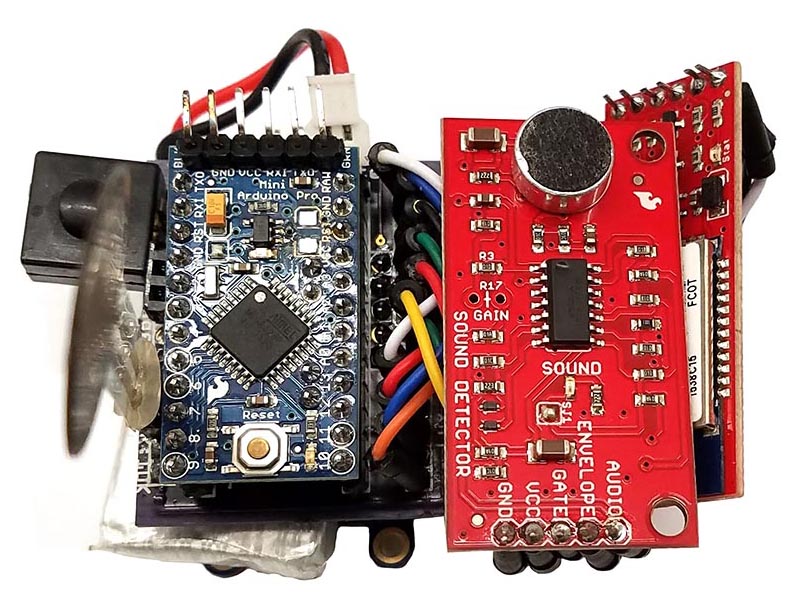
“And he built the whole thing,” Lane said. “It was about the size of a deck of cards and took 15 different measurements, sending the data wirelessly to the computer. The device has great potential for use in physics classes. For example, we used it to gather data during the 2017 solar eclipse.”
Eventually, the professor and his student research assistant published a paper on the device and made a presentation at a physics meeting. Although Lane since has challenged other students to follow Mehta’s design, replacing outdated parts with newer ones now available in the marketplace, no one has been able to match what Mehta achieved.
“He gave me a problem and challenged me to find the answer and propose a solution with an estimated budget,” Mehta said. “I delivered the final product. It was the first time I was treated as a professional.”
In addition to Lane, Mehta referenced two other mentors from his Berry days: First, Dr. Zane Cochran, “who got me into coding, which is most of my bread and butter these days.” Cochran is clinical assistant professor of creative technologies and director of HackBerry Lab where Mehta also worked while a student. Second, Dr. Truong Le, who first ignited Mehta’s passion for research and “got me into black holes or space research.” Le was then Berry assistant professor of physics, astronomy and geology and now is senior professorial lecturer of physics at American University.
One hot future
After just two years as a staff member at LANL, Mehta has distinguished himself and is “on his way to accomplishing things,” according to Director Rao. Mehta’s expertise seems obvious, but his ability to make his mark is not centered solely on his scientific, computational and mathematical proficiency.
“I learned something about Vedant that I didn’t know before,” Rao said. “He went to Berry College. I never heard of it before; my ignorance is not a reflection on your excellent institution. It sure seems to have instilled a sense of confidence and an ethic of hard work in him. Those qualities you don’t pick up in grad school. We recruit from among the best and brightest. What distinguishes people are the intangibles I have mentioned. Kudos for that! With them, he could go in any direction he chooses.”
Mehta’s chosen direction, his ultimate career goal? “To lead our nation’s space reactor portfolio.”
We have liftoff!